~ * ~
This article was written by Anjuli Johnson
Google defines a symbol as “a thing that represents or stands for something else, especially a material object representing something abstract.” In other words, a symbol is something tangible that represents an abstract idea. When we think of symbols, I believe the tendency is to think of them as obscure references, not widely used, but the truth is we use symbols every day. They are all around us. Logos and banners, gestures, signs- symbols are on our money, on our cars, and even in our language. Letters and words are themselves symbols if you stop to think about it. Each letter of the alphabet is simply a mix of lines and curves on a page. By themselves, letters and words don’t mean anything, but because our culture has ascribed meaning to these markings and the order they may be arranged in, they enable us to develop thoughts and ideas about the world and share those ideas with other people.
Symbols are a teaching tool, and as such are indispensable when it comes to artistic expression. Artists can teach absolute truths indirectly by incorporating symbols into their art. I’d like to talk about a few of the ways I have added symbolic meaning to my art, and how each of us can share our ideas of absolute truth with our audience through the intentional use of symbols.
Symbols are best for sharing ideas when they are easily recognizable. The piece pictured is one in a series of panels, and this particular panel is using color to symbolize sin and corruption. Black and Red together are easily recognizable as symbols of darkness and terror. (Think “The Masque of the Red Death”, by Edgar Allen Poe.) Combined with the mess of elements, the erratically stitched muslin, the splashes of paint, and the overall messiness and chaos of this piece, the ideas of corruption and attempts to hide that corruption are well represented.
In this piece I used blocks of text from different books that are easily recognizable in western culture (The Bible, Shakespeare, Don Quixote, etc.) By themselves, these blocks of text could symbolize an accumulation of knowledge and culture; the birthplace of our western societies and way of thinking. However, combined with the mess of paper clay, the splashes of brown paint, and the randomness of the paper elements, the meaning changes. Now it represents how our culture forgets and covers the past in many ways to justify the choices of the present.
I generally approach my art in two different ways- I work on a piece one element at a time and allow it to develop a life of its own, or I plan things out carefully and really take my time to ensure my vision matches what I have created as closely as possible. I’ve found that deliberately finding ways to incorporate symbolic meaning generally means I have to take my time and plan my work very carefully, but that process really stretches me as an artist. It’s when I’m working in this way that I experiment more, I expand my thinking and my ideas, and I end with a creation that feels like more of myself.
There are so many ways to incorporate symbolic meaning into our art. Through color, texture, text, visual signs and tokens, etc. we can share important ideas and themes. Just as words are written down to reveal truth and knowledge to its readers, so too symbolic art can teach absolute truth to those who take the time to understand it. This is one of the main reasons why I believe art is so important- the fact that it can help change and stretch us as artists, individuals, and societies.
~*~*~*~*~*~*~*~*~*~*~*~*~*~*~*~*~*~*~*~*~*~*~*~*~
Anjuli Johnson is a Mixed Media Artist from Raleigh, NC. She began her art career as a scrapbooker, and it’s been an evolutionary process every since. She loves all things mixed media- paper, glue, paint, canvas, pens, wire, gears… the list goes on and on. She is constantly trying to push through her fears to discover and develop her talents, meet new people, and learn from those around her. TheFarPavilion
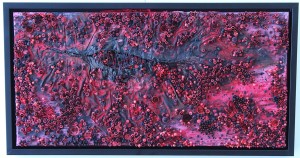
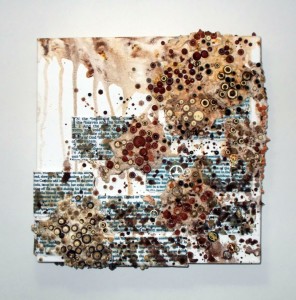
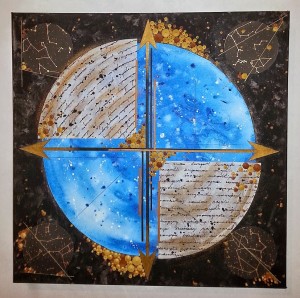
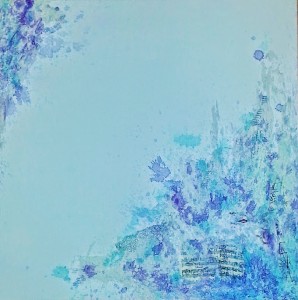
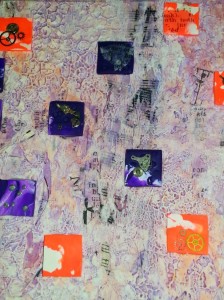
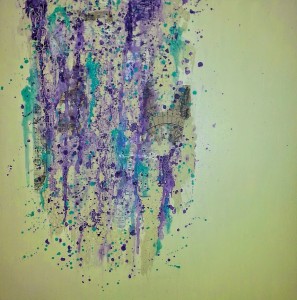
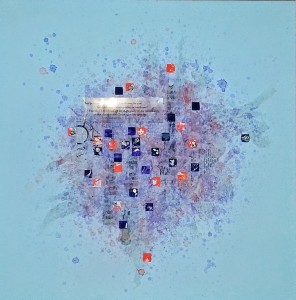



Recent Comments